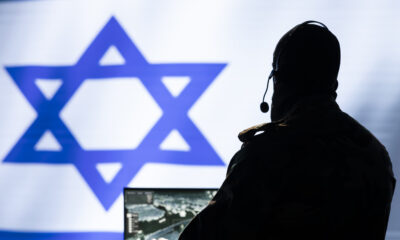
OpEds

Propaganda war equally offensive – just ask Vietnam
Hamas’ attack on Israel has prompted comparisons with past events, particularly with the 1973 Yom Kippur War. An equally compelling comparison could be made with a piece of history some remove from Israel’s. This was the so-called Tet Offensive during the Vietnam War.
Those with a passing familiarity with the Vietnam conflict might identify “Tet” as an apocalyptic defeat for the United States (US) and its South Vietnamese allies, even if by sheer weight of resources the US held on a few years longer. For many, that’s how it has passed into history. The reality is different.
On 30 and 31 January 1968, the communist underground in South Vietnam, the Viet Cong, backed by their North Vietnamese allies – or patrons, according to taste – went on the offensive, hitting military and administrative targets across the country, especially in its urban centres. Eschewing the guerrilla warfare that had frustrated their adversaries, the communists tried for a knockout punch. Essentially conventional attacks involving about 85 000 combatants hoped to disable the south, collapse its military, and incite a popular uprising. A new regime would then expel the Americans and prepare for unification with the north.
The offensive had been a long time in the making. Diversionary actions over the preceding year had lured American and South Vietnamese forces away from those areas targeted during Tet. It was timed to exploit the truce at the Lunar New Year – hence the name “Tet”, a truncation of the relevant Vietnamese term, Tết Nguyên Đán – when their enemies were at their least alert.
The initial shock was profound. In the capital, Saigon, critical facilities were overrun – one team even breached the grounds of the US embassy. The American Commander, General William Westmoreland, was described as “stunned that the communists had been able to co-ordinate so many attacks in such secrecy”.
Yet, within hours, serious defects in the plan became clear. The South Vietnamese army, of variable quality and mixed reputation, didn’t roll over but put up stiff resistance. The communists also underestimated the US’ ability to redeploy its forces within the country. And no uprising followed.
Within days, the offensive had been blunted. By 20 March, it had effectively been defeated. Two further “phases” were launched later in the year, to limited effect.
Tet was actually a stinging military defeat for the communists. The infrastructure of the Viet Cong was severely degraded, shifting the prosecution of the war increasingly to the North Vietnamese (some southern communists resentfully felt this was their northern comrades’ intent).
Yet Tet was a communist political victory. It established a narrative of communist Vietnamese resilience and American vulnerability, and that South Vietnam wasn’t worth fighting for – a photo of police general Nguyễn Ngọc Loan summarily executing a Viet Cong operative (himself, incidentally, accused of having murdered a family including a number of children) became a defining image of the war. Atrocities perpetrated by the communists, though documented, received rather less coverage.
The resulting heightened American anti-war sentiment did much to destroy the presidency of Lyndon B. Johnson and had the US seeking an exit. South Vietnam ultimately ceased to exist in 1975.
Whatever may be said about Hamas’ atrocities, in purely military terms, it pulled off a complex operation with great competence. It succeeded in achieving surprise by creating the impression that it was focused on development and not on a confrontation, and breached the barriers around Gaza, before moving to the civilians beyond. Israel evidently didn’t see it coming.
But Hamas won’t prevail in any discernible military sense. Israel has steadily reasserted itself, and by the time this contribution is read, may have commenced ground operations inside Gaza. Israel will exist after the shooting stops, bloodied but intact.
The open question, mirroring the American experience at Tet, is the political cost. The Vietnamese sought a military victory but gained a political one, arguably a more enduring species. This is what Hamas has sought: demonstrating its own reach and prowess, it seeks to sap Israeli morale.
Murdering and abducting civilians represents a part of this strategy. It brings little military advantage, but signals to Israel’s civilians their vulnerability and that conditions for life in the relatively successful country are compromised – expect this to be an issue in Israel’s politics. And the brazenness of its actions emboldens its supporters locally and, more importantly, internationally. Understand the value of the imagery from the attack in this light. A disabled Merkava tank and a Hamas commando paragliding into a music festival are evocative signifiers.
This in turn contributes to the Hamas narrative of valiant resistance to a militarily superior, but in its view, morally inferior oppressor. Add to this the collateral damage to Gaza, and Hamas may well draw a significant political dividend. In South Africa, this has been evident, from the response of the president down. The relentless invocation of terms like “settlers”, “colonialism”, “apartheid”, and “ethnic cleansing” are intended to frame interpretations, a tool arguably more powerful than guns and explosives. Indeed, the sight of crowds in countries generally friendly to Israel waving Hamas flags calls to mind demonstrators in the US and Europe in the 1960s with Viet Cong insignia.
Much will depend on which images and which narrative comes to define the conflict. It’s been said that the Vietnam War wasn’t lost in the jungles of Indochina but on the streets of Washington, with the spectre of Tet much in evidence. For Israel, the decisive front is less in Gaza than in the minds of people and policy makers remote from the fighting.
- Terence Corrigan is Project and Publications Manager at the South African Institute of Race Relations, South Africa’s oldest think tank, which aims to promote individual and societal freedom and prosperity.










